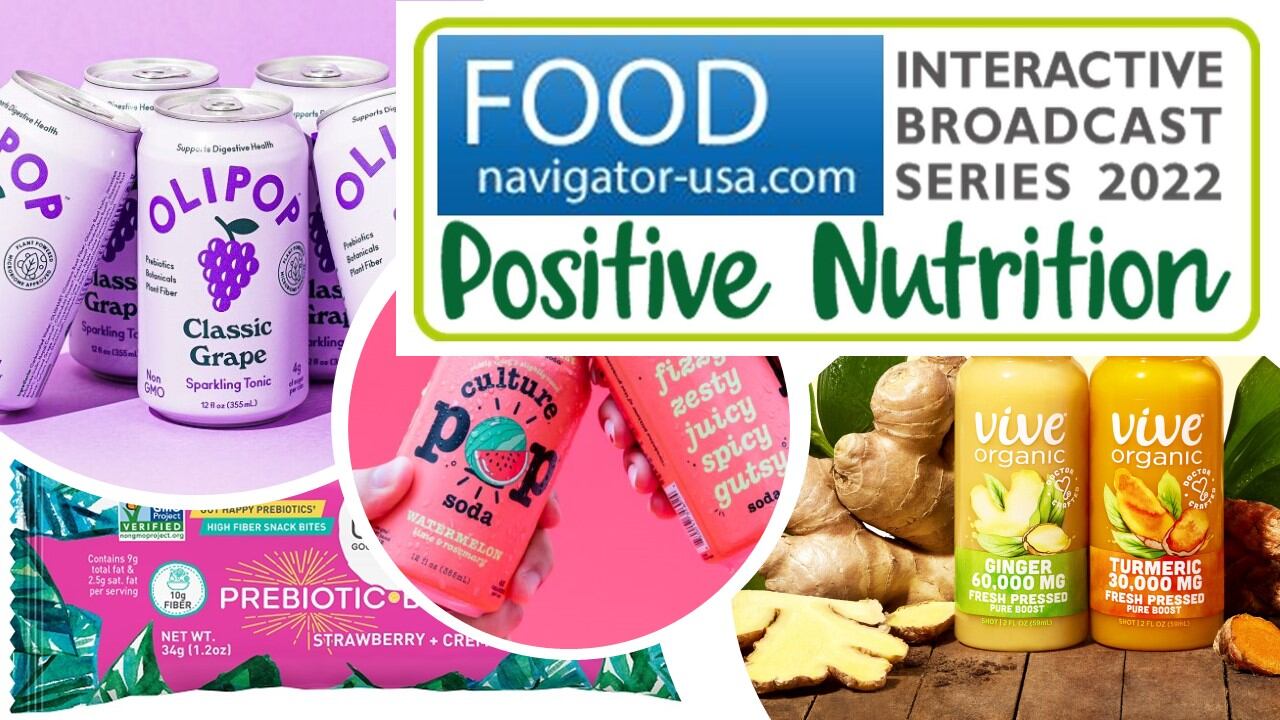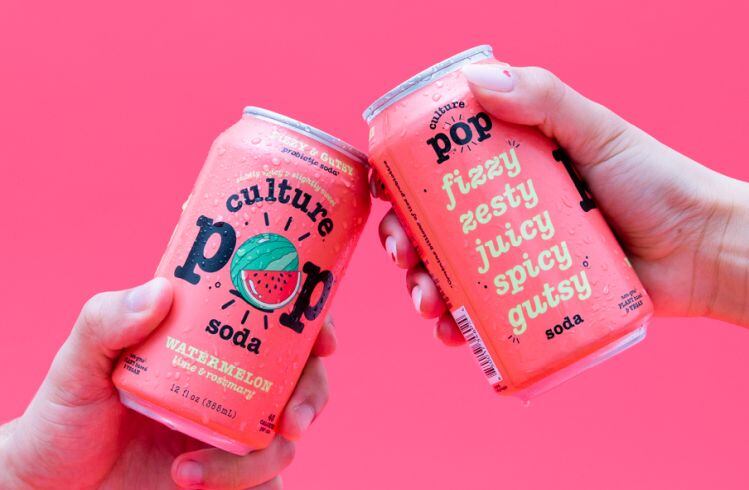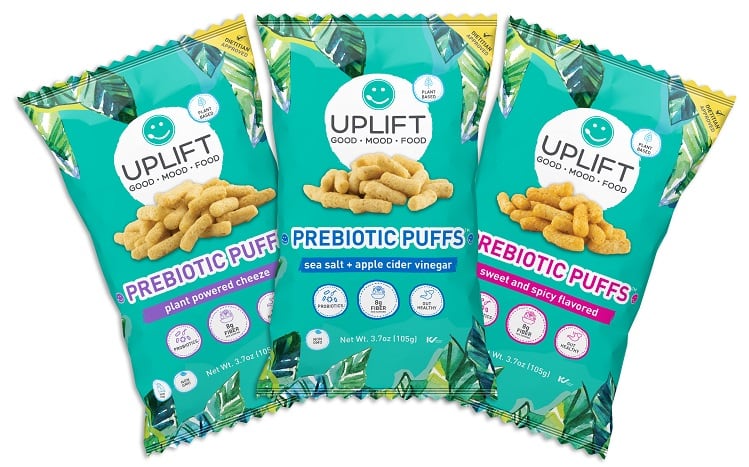Tate & Lyle principal scientist, North America Global Nutrition, Dr Melissa Kaczmarczyk - who is speaking at FoodNavigator-USA’s ‘Feeding the Gut Microbiome’ webinar this Thursday in a panel on prebiotic fibers and resistant starch - said Tate & Lyle, a sponsor for the event, is still discovering new things about the fiber, which it has been marketing in the US since 2007.
“We are currently conducting research in emerging and cutting-edge research areas such as fiber and cognitive health, metabolic health and immunity, and we have partnered with academic experts at leading universities to conduct these studies.
“We are also interested in how our prebiotic fibers work with probiotics.”
The gut brain axis
PROMITOR soluble corn fiber (resistant maltodextrin) - which can be used for fiber fortification and sugar or fat reduction - is classified as a dietary fiber by the FDA, and has also been shown to reduce blood glucose after a meal, said Kaczmarczyk, with CPG companies now using it in everything from bars, cereals and baked goods to confectionery, beverages, sauces, yogurt, and ice cream.
Its prebiotic effects - it stimulates the growth of beneficial bacterial and decreases the presence of harmful bacteria and putrefactive compounds in the gut such as ammonia - are also attracting interest from CPG companies looking to make prebiotic claims on pack, said Kaczmarczyk.
However, we’re still just scratching the surface, she said, noting that we already know that some probiotics impact cognitive function, but more research is needed on prebiotics: “There are some preliminary papers showing that fibers can change microbiota that change chemicals and pathways on the gut brain axis, and so we are interested to see if soluble corn fiber also has these properties.”
Prebiotic corn fiber and bone health
When it comes to dietary fiber in general - a nutrient of concern in the US, where >90% of women and 97% of men do not meet recommended intakes - moving the conversation away from ‘roughage’ and ‘regularity’ to a more nuanced conversation about the microbiome has helped renew consumer interest in fiber, although the take-home message, as with everything, is not quite as simple as it seems, said Kaczmarczyk, noting that, “Not not all fibers are prebiotics, and not all prebiotics are fibers.”
For PROMITOR, being able to promote it as a prebiotic fiber that supports bone health has also driven recent interest and given food formulators interested in this health benefit another option beyond calcium and vitamin D, she added.
“In human clinical studies, we have demonstrated increased calcium absorption during adolescence, a really important time for bone growth, but also in postmenopausal women, where soluble corn fiber can help with bone calcium retention during that second critical period for bone health when women tend to start losing calcium.”
So what's the mechanism of action?
“It could be several mechanisms,” speculated Kaczmarczyk. “It's tied to the prebiotic portion, so by increasing favorable bacteria, those bacteria produce short chain fatty acids, which can lower the gut pH, which in turn increases calcium absorption. Also by changing the bacteria profile, it can change the features of the intestine, increasing surface area, so more calcium can be absorbed.”
Fibers… and unpleasant side effects?
When it comes to digestive tolerance, one particularly attractive thing about PROMITOR is that it is digested more slowly than some other prebiotic fibers on the market, she claimed.
“So, some of them will be digested rather quickly in the ascending colon, meaning that the gases and other substances have to travel quite a long way to be expelled and have more time to cause some distress. Soluble corn fiber is fermented later, more in the transverse and descending part of the colon, more slowly, and therefore we see fewer [GI] symptoms.”
Interested in prebiotics, probiotics, postbiotics, and resistant starch?
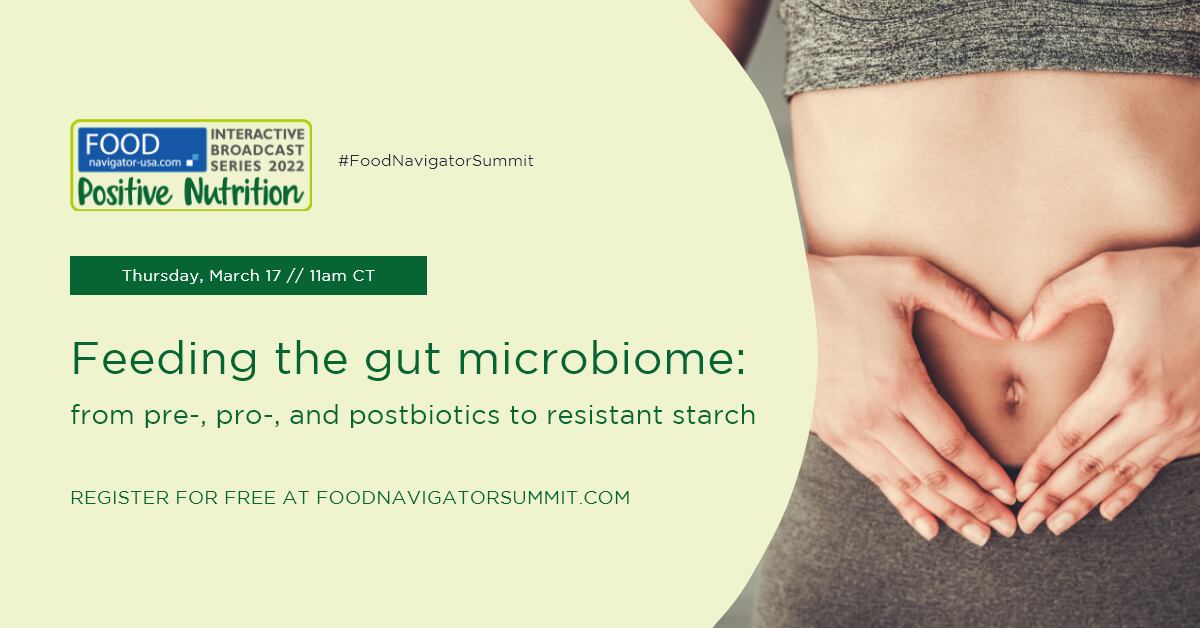
Tune into FoodNavigator-USA’s FREE-to-attend webinar on Thursday (March 17) at 9am PT/11am CT to discuss: Feeding the Gut Microbiome: From pre-, pro-, and postbiotics to resistant starch
Speakers in this session include:
- Bob Hutkins, PhD , Khem Shahani Professor of Food Microbiology, University of Nebraska-Lincoln
- Miguel Freitas, PhD , VP Health and Scientific Affairs, Danone North America
- Justin Green, PhD, Director of Scientific Affairs, Cargill Health Technologies
- Todd Beckman , President, Verb Biotics
- Tom First , Founder & CEO, Culture Pop
- Ben Goodwin , CEO, Co-Founder & Formulator, Olipop
- Jason Leibert , Chief Growth Officer, Solnul
- Kara Landau , CEO & Head Dietitian, Uplift Food
- Melissa Kaczmarczyk, PhD, MPH , Principal Scientist, North America, Tate & Lyle
- Shelley Balanko, PhD , Senior Vice President, The Hartman Group
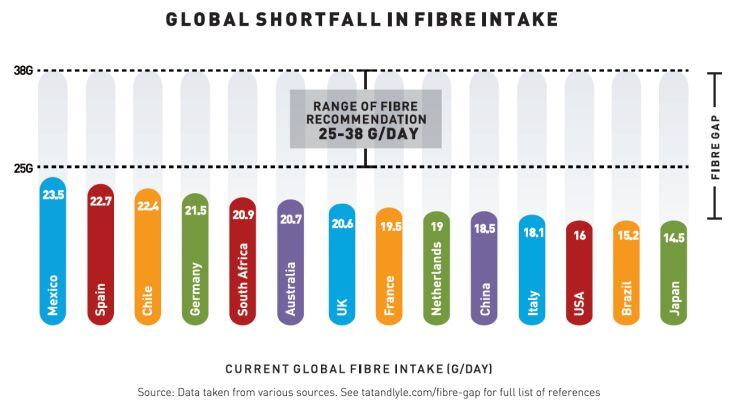
THE FIBER GAP: According to Kaczmarczyk: "The challenge that exists today is that consumers are just not getting enough fiber. Looking at the bar chart, you can see that all the countries' average intakes are below the dotted line, which is the recommended amount we should eat - this is the range of recommendations from 25g/day for adult women to 38g/day for adult men based on research demonstrating protection against coronary heart disease. This is what we call the fiber gap: the difference between what is recommended and what is actually consumed."
A recent modeling study by Tate & Lyle looked at what UK consumers ate via the National Diet and Nutrition Survey, and then applied a statistical modeling scenario to see how such a diet that had been reformulated with additional fiber might impact health, said Kaczmarczyk.
"Top line," she said, "the study found that 6% of the population would achieve a weight reduction and 72% of the population would achieve a reduction in the risk of cardiovascular disease and type 2 diabetes."

